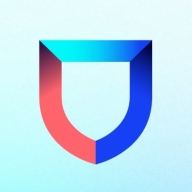

Lacework FortiCNAPP and Varonis Platform compete in the security and compliance category. Lacework appears to have the upper hand due to its strong focus on integration capabilities, multi-cloud support, and continuous monitoring that enhances security insights and posture.
Features: Lacework FortiCNAPP is known for its effective anomaly detection, comprehensive compliance reporting, and continuous 24/7 monitoring. These features enable users to gain security insights and maintain a strong security posture. Varonis Platform provides robust data access governance, the ability to monitor data access without impacting performance, and strong remediation capabilities. It effectively identifies sensitive data areas and offers unstructured data scanning.
Room for Improvement: Lacework FortiCNAPP could improve its visibility, streamline alert settings, and address challenges with data governance and IAM security management. Enhancements in integration with third-party systems and container security are needed. Varonis Platform requires a more cohesive data model and better cloud environment integration. Improving the user interface and alert management, and reducing licensing costs would be beneficial.
Ease of Deployment and Customer Service: Lacework FortiCNAPP is strong in public cloud deployments and provides responsive customer support, offering personalized interaction and multiple support channels. Varonis Platform, deployed in on-premises and hybrid clouds, finds minimal support communication needed post-integration. Users acknowledge effective technical support but note occasional complexity in problem resolution.
Pricing and ROI: Lacework FortiCNAPP offers competitive pricing and potential immediate ROI by reducing manual monitoring efforts and efficient alert management, although it may be expensive for large environments. Varonis Platform is marked by high licensing costs impacting companies with limited budgets, yet some find the investment justified by its data governance and threat management capabilities.
| Product | Market Share (%) |
|---|---|
| Varonis Platform | 4.3% |
| Lacework FortiCNAPP | 4.2% |
| Other | 91.5% |


| Company Size | Count |
|---|---|
| Small Business | 4 |
| Midsize Enterprise | 4 |
| Large Enterprise | 3 |
| Company Size | Count |
|---|---|
| Small Business | 2 |
| Midsize Enterprise | 1 |
| Large Enterprise | 11 |
Lacework FortiCNAPP provides robust cloud security, combining vulnerability management and multi-cloud insight with user-friendly controls, machine learning detection, and compliance support.
Lacework FortiCNAPP specializes in cloud security by merging machine learning anomaly detection with agent-based vulnerability management to offer detailed alerts and compliance reports. Its comprehensive approach allows continuous monitoring across AWS and Kubernetes, providing insights from an attacker's perspective. The platform offers automation and seamless Slack integration, facilitating collaborative and efficient cloud security management. Users value its ability to handle multi-cloud environments and scan IAC scripts, configurations, and compute nodes across AWS and GCP.
What are the key features?Organizations across sectors leverage Lacework FortiCNAPP for cloud security, focusing on compliance, security posture, and vulnerability management. It is widely used for monitoring AWS and Kubernetes environments, scanning IAC scripts, configurations, and securing compute nodes. It supports multi-cloud security posture management and log ingestion, enabling companies to maintain strong cloud infrastructures without dedicated security layers.
Varonis Platform enhances data security and governance with advanced analytics, identifying unusual access patterns and sensitive areas. Its centralized interface manages permissions across systems, offering essential capabilities for alerting and reporting.
Varonis Platform provides continuous data protection and monitoring by identifying and alerting on unauthorized data access. It offers comprehensive insights into file access and user activities, supporting data classification and simplifying compliance with tracking and monitoring capabilities. Integration with storage systems enables users to manage permissions and access effectively. Room for improvement includes cloud integration and simplifying its interface and calculation engine for ease of use. Challenges include on-premises dependency, licensing costs, and a need for enhanced DLP capabilities.
What are the primary features of Varonis Platform?
What benefits and ROI should users expect?
In finance, Varonis aids in safeguarding sensitive financial data, while in healthcare, it secures patient records. Legal industries utilize it for protecting client information, and retail sectors manage sensitive customer data. These industries benefit from Varonis' ability to prevent unauthorized access and streamline compliance.
We monitor all Compliance Management reviews to prevent fraudulent reviews and keep review quality high. We do not post reviews by company employees or direct competitors. We validate each review for authenticity via cross-reference with LinkedIn, and personal follow-up with the reviewer when necessary.